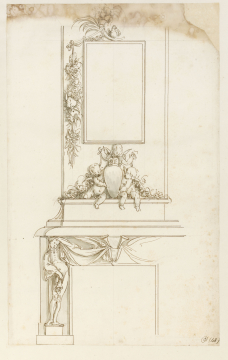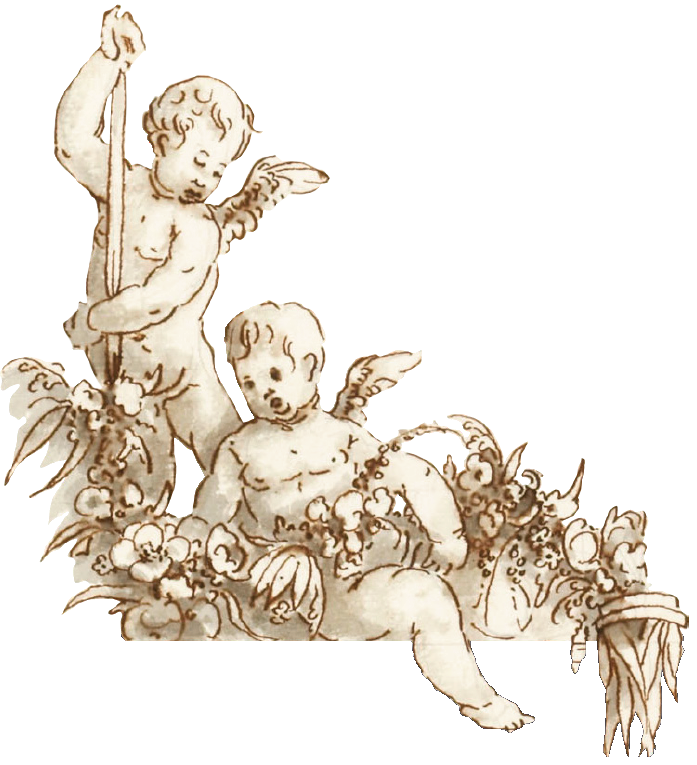Design for Chimney-Piece with Putti
Creator(s): Grinling Gibbons 1648-1721
Date: Undated, but datable 1689-94
Accession Number: SM110/49
Dimensions: 419mm h x 260mm w
Materials: Pen and brown ink over graphite under drawing with grey wash; on laid paper
Location: Sir John Soane's Museum
Credit Line (copyright notice for material) : © Sir John Soane's Museum
Online Catalogue Entry : http://collections.soane.org/OBJECT291

NOTES ON THE ARTWORK
In design and pen technique, the design for a chimney-piece with putti is close to 110/26 [Design for Chimney-Piece with Trophy and Relief on this website]. Both have similar fire surrounds with herm or caryatid figures set between a thin frame around the hearth and a deeply projecting convex moulding at the base of a large mantel-shelf pedestal. In each case the pedestal supports a pyramid-shaped sculptural group that is part of a larger triangular composition extending from the fire surround to the top of the overmantel. This side-to-centre movement is typical of Gibbons’s mature designs for monumental sculpture and exemplified his increasing mastery of ‘baroque’ compositional devices (e.g. his monument to Earl Fauconberg, d.1700, at St Michael Coxwold, Yorks, in Beard, Grinling Gibbons, 1989, fig. 117). In the 1680s his statuary compositions are often disparate in character, with an imbalance between the scale or sculptural emphasis of the outer and central features (e.g. monument to German and Anne Pole, St Andrew Radbourne, Derbyshire, 1683-84; Beard, pl. 78).
But though the design has affinities with 110/26, it is distinct from the designs for richly sculpted chimney-pieces this and the previous section (4) in several respects. There is no coloured wash; there is a small ‘W’ insignia in graphite at the centre of the wing motif above the hearth, rather than ‘WM’ intertwined; there is a single seated dove rather than a pair of sporting birds at the top of the overmantel; the nude herm figure has his head part-covered in drapery as if lifting a veil, an unusual, almost funerary device, untypical of chimney-piece statuary; and there is only a single crown above the cartouche. All these details may point to the design dating shortly after the death of Queen Mary in December 1694, but before William had finally decided to abandon work on the interiors of Hampton Court Palace. As a whole, the design has a mournful character, especially in the pose of the herm figure and the absence of colour. Moreover, it appears to be unfinished. The carved work of the fire surround and overmantel would probably have been in white-painted limewood, perhaps with the intention of imitating the appearance of marble.
Literature: Wren Society, IV, pl. 39, top.
Digitisation of the Drawings Collection has been made possible through the generosity of the Leon Levy Foundation.
If you have any further information about this object, please contact: drawings@soane.org.uk


